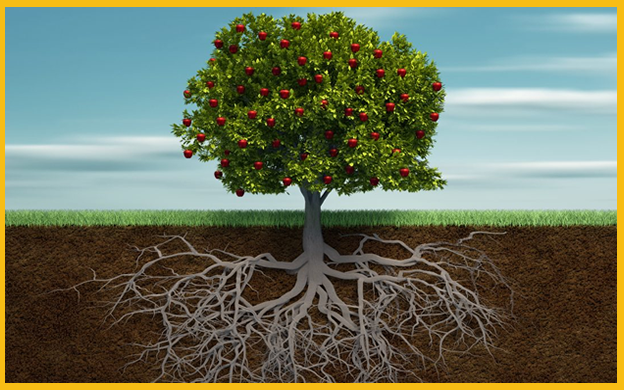Here’s How to Tell How Much Water Your Tree Should Get

By Cindy Bruecks
Question: Is watering my mature tree with three drip emitters three times a week for 15 minutes too much? It has some yellowing and withered leaves.
Answer: If the tree is in the ground, that’s likely too little water. Here’s how to tell:
If the tree is in the ground, and all you are giving it is a total of 45 minutes a week from 3 drip emitters, then it is likely getting too little water, not too much. Regardless of what type of soil you have, here is how you can determine, empirically, how to water your tree.
For the warm season, first, run your current system just as you have been doing. With a trowel, dig down somewhere out near but within the drip line (the perimeter of the branches) to see how far down you need to go to get to dry dirt. Don’t dig right under an emitter, but instead maybe halfway between two emitters. This will likely be at most an inch or two of wet soil before you hit dry dirt. If your emitters are widely spaced, you might do this in two places to see if there is a noticeable difference between digging spots.
The next watering day, double the amount of time you run the system, and again dig down. You want to repeat this process until you find more than a foot of wet soil. The amount of time you ran the system is then the time it takes to wet 12” of soil. Bear in mind the tree’s roots likely go down three feet or more, although many of the feeder roots are in the top foot or two of soil. Now wait a week and dig before running the system. That will tell you how much the soil dried out (from the top) in one week, and how much of that one foot of soil is still moist below the surface. If you garden in beach sand, the entire foot might be dry, but if you garden in clay, it may be only an inch that has dried.
For a tree, your goal is to wet deeply and evenly, then wait until the top foot has dried out before you water again. The above method is a good way to determine if your irrigation system puts out water unevenly so that you can go about correcting it. If you have been wetting just the top inch or two, then you might also want to slow your progression toward “deep and infrequent”. That is, if the tree’s feeder roots have only been finding water in the top inch or two, that is probably where most of them have developed. You want to encourage the tree to put down deep roots by letting the deeper moisture sustain the tree between irrigation cycles. So, slowly move from your current weekly water delivery to the amount you have determined is needed for deep water penetration. At the same time, slowly move your between-irrigations interval to your measured dry-out time. Your reward will be a healthier tree which is also more resistant to drought and more resilient to wind. And it’s a reminder your trowel can be your best garden friend.
Cindy Brueks has been a UC Master Gardener since 2005. Get free gardening advice on the Master Gardener Hotline, (858) 822-6910, or by email at help@mastergardenersd.org. Due to COVID-19, the Master Gardener Hotline staff members are working remotely to ensure they respond to your questions in a timely manner.

